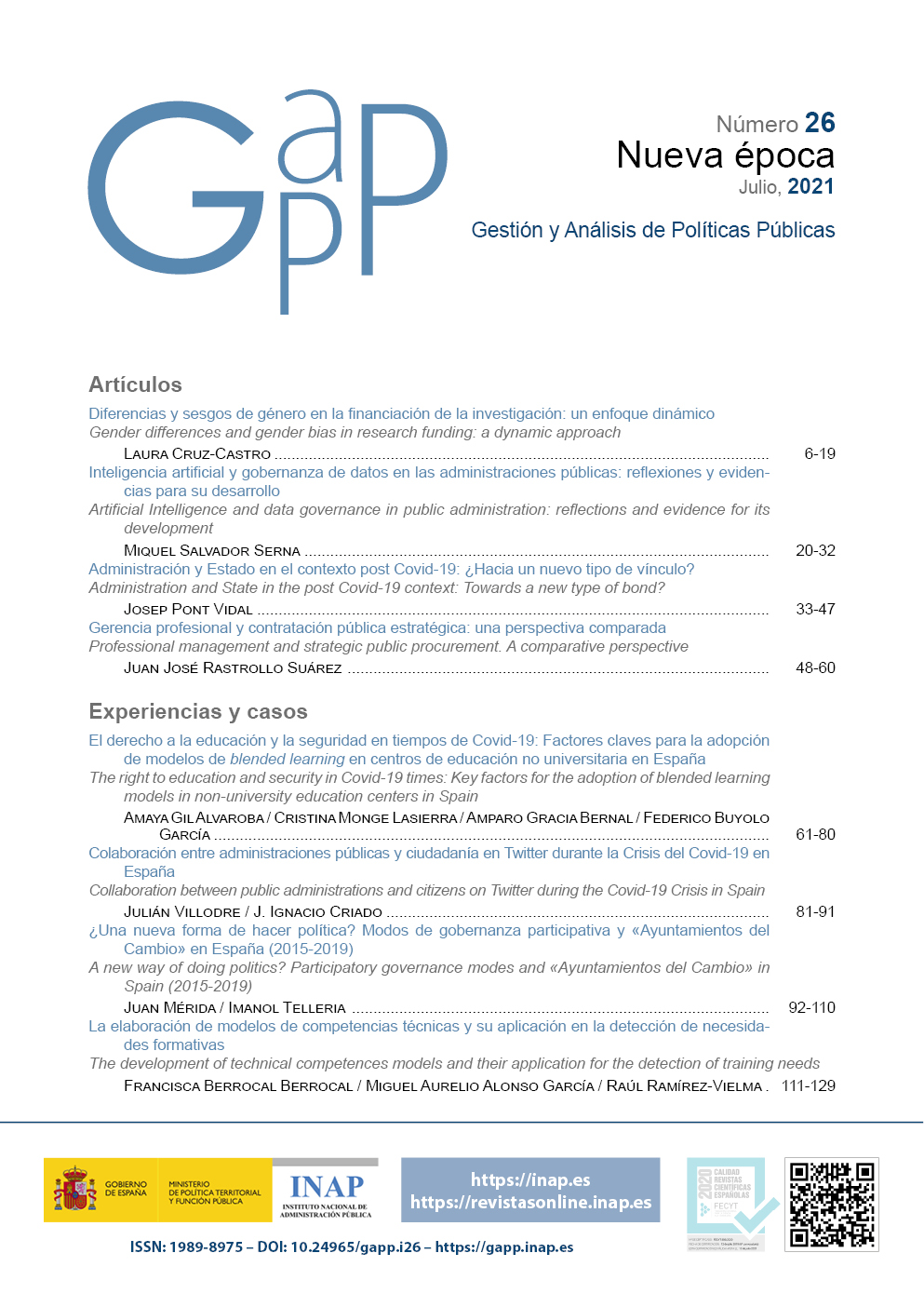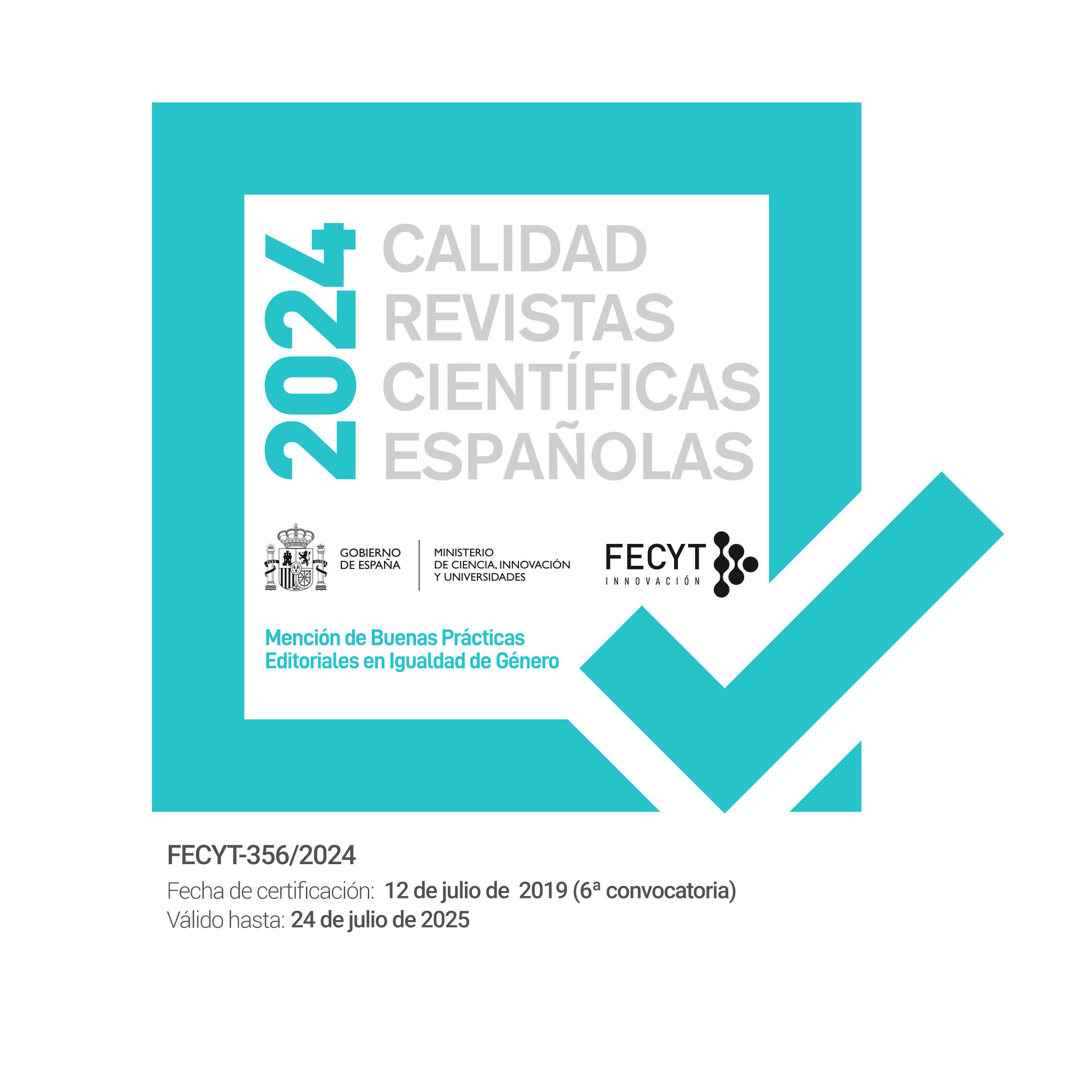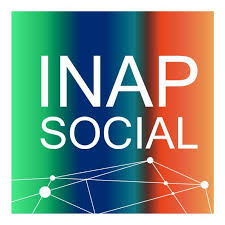Diferencias y sesgos de género en la financiación de la investigación: un enfoque dinámico
DOI:
https://doi.org/10.24965/gapp.i26.10909Palabras clave:
Financiación de la investigación, Diferencias de género, Sesgo, Evaluación por paresResumen
En general, las científicas consiguen menos fondos para investigar y tienen, con respecto a los solicitantes, menores tasas de éxito que los hombres. Este artículo revisa críticamente la literatura sobre las disparidades y sesgos de género en la financiación de la investigación, reconociendo la diversidad de hallazgos, y poniendo el énfasis en la necesidad de clarificación conceptual y rigor metodológico. Se adopta un enfoque dinámico con la premisa de que las diferencias en las tasas de solicitud y éxito en las convocatorias de proyectos de investigación se ven afectadas por diferencias previas y acumulativas, y a su vez influyen en la carrera posteriormente. Se revisa también el papel de las preferencias y de las expectativas individuales a la hora de competir, así como el proceso de evaluación y cómo las características de los evaluadores y de los procedimientos de las agencias pueden activar o desactivar mecanismos de sesgo.
Descargas
Citas
Abramo, G., D’Angelo, C. A. y Murgia, G. (2013). Gender differences in research collaboration. Journal of Informetrics, 7(4), 811-822. https://doi.org/10.1016/j.joi.2013.07.002
Agencia Estatal de Investigación – AEI (2020). Proyectos de I+D de «Generación de Conocimiento». Proyectos de I+D+i «Retos Investigación». Convocatorias 2018. [informe de análisis]. https://www.ciencia.gob.es/portal/site/MICINN/menuitem.791459a43fdf738d70fd325001432ea0/?vgnextoid=1c85ed0682835610VgnVCM1000001d04140aRCRD&vgnextchannel=ede586fd6c544610VgnVCM1000001d04140aRCRD&vgnextfmt=formato2&id3=b257eacaf341f610VgnVCM1000001d04140a____
Agencia Estatal de Investigación (2021). Programa Ramón y Cajal para la contratación de investigadores de trayectoria destacada 2018/2019. Análisis [informe]. https://www.ciencia.gob.es/stfls/MICINN/AEI/ficheros/Informe_Programa_Ramon_y_Cajal_convocatorias_2018_19.pdf
Antal, A. B., Hutter, M. y Stark, D. (2015). Moments of Valuation: Exploring Sites of Dissonance. Oxford University Press.
Antecol, H., Bedard, K. y Stearns, J. (2018). Equal but Inequitable: Who Benefits from Gender-Neutral Tenure Clock Stopping Policies? American Economic Review, 108(9), 2.420-2.441. https://doi.org/10.1257/aer.20160613
Bagues, M., Sylos-Labini, M. y Zinovyeva, N. (2017). Does the Gender Composition of Scientific Committees Matter? American Economic Review, 107(4), 1.207-1.238. https://doi.org/10.1257/aer.20151211
Blake, M. y La Valle, I. (2000). Who applies for research funding? Key factors shaping funding application behaviour among women and men in British higher education institutions [informe]. National Centre for Social Research. https://wellcomecollection.org/works/qctj6ypv
Bohren, J. A., Imas, A. y Rosenberg, M. (2019). The Dynamics of Discrimination: Theory and Evidence. American Economic Review, 109(10), 3.395-3.436. https://doi.org/10.1257/aer.20171829
Bornmann, L. (2011). Scientific peer review. Annual Review of Information Science and Technology, 45(1), 199-246. https://doi.org/10.1002/aris.2011.1440450112
Bornmann, L., Mutz, R. y Daniel, H.-D. (2008). How to detect indications of potential sources of bias in peer review: A generalized latent variable modeling approach exemplified by a gender study. Journal of Informetrics, 2(4), 280-287. https://doi.org/10.1016/j.joi.2008.09.003
Cartwright, N. y Hardie, J. (2012). Evidence-Based Policy: A Practical Guide to Doing It Better. Oxford University Press.
Ceci, S. J. y Williams, W. M. (eds.) (2007). Why Aren’t More Women in Science? Top Researchers Debate the Evidence (1. ª ed.). American Psychological Association. https://doi.org/10.1037/11546-000
Checchi, D., Cicognani, S. y Kulic, N. (2019). Gender Quotas or Girls’ Networks? Evidence from an Italian Research Selection. Work, Employment and Society, 33(3), 462-482. https://doi.org/10.1177/0950017018813071
Chubin, D. E. y Hackett, E. J. (1990). Peerless Science: Peer Review and U. S. Science Policy. SUNY series in Science, Technology, and Society. State University of New York Press.
Cole, J. R. (1979). Fair Science: Women in the Scientific Community. The Free Press.
Cole, J. y Zuckerman, H. (1984). The productivity puzzle: persistence and change in patterns of publication of men and women scientists. Advances in Motivation and Achievement, 2, 217-258.
Cole, S. y Fiorentine, R. (1991). Discrimination against women in science: The confusion of outcome with process. En H. Zuckerman, J. R. Cole y J. T. Bruer (eds.), The Outer Circle: Women in the Scientific Community (pp. 205-226). Yale University Press.
Cruz Castro, L. y Sanz Menéndez, L. (2020). Grant Allocation Disparities from a Gender Perspective: Literature Review. Synthesis Report. GRANteD Project D.1.1. Digital.CSIC. https://doi.org/10.20350/digitalCSIC/10548
Cruz Castro, L. y Sanz Menéndez, L. (2016). The effects of the economic crisis on public research: Spanish budgetary policies and research organizations. Technological Forecasting and Social Change, 113, Part B, 157-167. https://doi.org/10.1016/j.techfore.2015.08.001
Comisión Europea (ed.) (2009). The gender challenge in research funding: Assessing the European national scenes [informe]. Office for Official Publications of the European Communities. https://www.genderportal.eu/resources/gender-challenge-research-funding-assessing-european-national-scenes
Comisión Europea (2014). Marie Curie researchers and their long-term career development: A comparative study: final report [informe]. Publications Office of the European Union. https://publications.europa.eu/en/publication-detail/-/publication/9c2cb7d8-3773-430c-b1c0-db94ec421b01
Ellemers, N. (2018). Gender Stereotypes. Annual Review of Psychology, 69, 275-298. https://doi.org/10.1146/annurev-psych-122216-011719
Escobar Alvarez, S. N., Jagsi, R., Abbuhl, S. B., Lee, C. J. y Myers, E. R. (2019). Promoting gender equity in grant making: what can a funder do? The Lancet, 393(10.171), e9-e11. https://doi.org/10.1016/S0140-6736(19)30211-9
Fernandez-Mateo, I. y Kaplan, S. (2018). Gender and Organization Science: Introduction to a Virtual Special Issue. Organization Science, 29(6), 1.229-1.236. https://doi.org/10.1287/orsc.2018.1249
Fortunato, S., Bergstrom, C. T., Börner, K., Evans, J. A., Helbing, D., Milojević, S., Petersen, A. M., Radicchi, F., Sinatra, R., Uzzi, B., Vespignani, A., Waltman, L., Wang, D. y Barabási, A.-L. (2018). Science of science. Science, 359(6.379), artículo eaao0185. https://doi.org/10.1126/science.aao0185
Goldin, C. y Rouse, C. (2000). Orchestrating Impartiality: The Impact of «Blind» Auditions on Female Musicians. American Economic Review, 90(4), 715-741. https://doi.org/10.1257/aer.90.4.715
Goulden, M., Mason, M. A. y Frasch, K. (2011). Keeping Women in the Science Pipeline. The ANNALS of the American Academy of Political and Social Science, 638(1), 141-162. https://doi.org/10.1177/0002716211416925
Heilman, M. E. (2001). Description and Prescription: How Gender Stereotypes Prevent Women’s Ascent Up the Organizational Ladder. Journal of Social Issues, 57(4), 657-674. https://doi.org/10.1111/0022-4537.00234
Heilman, M. E. (2012). Gender stereotypes and workplace bias. Research in Organizational Behavior, 32, 113-135. https://doi.org/10.1016/j.riob.2012.11.003
Jappelli, T., Nappi, C. A. y Torrini, R. (2017). Gender effects in research evaluation. Research Policy, 46(5), 911-924. https://doi.org/10.1016/j.respol.2017.03.002
Knobloch-Westerwick, S., Glynn, C. J. y Huge, M. (2013). The Matilda Effect in Science Communication: An Experiment on Gender Bias in Publication Quality Perceptions and Collaboration Interest. Science Communication, 35(5), 603-625. https://doi.org/10.1177/1075547012472684
Kolev, J., Fuentes-Medel, Y. y Murray, F. (2019). Is Blinded Review Enough? How Gendered Outcomes Arise Even Under Anonymous Evaluation [NBER Working Paper Series, 25.759]. National Bureau of Economic Research. https://doi.org/10.3386/w25759
Kravitz, D. A. y Platania, J. (1993). Attitudes and beliefs about affirmative action: Effects of target and of respondent sex and ethnicity. Journal of Applied Psychology, 78(6), 928-938. https://doi.org/10.1037/0021-9010.78.6.928
Latour, B. y Woolgar, S. (1979). Laboratory Life: The Construction of Scientific Facts (2.ª ed.). Princeton University Press https://doi.org/10.2307/j.ctt32bbxc
Ley, T. J. y Hamilton, B. H. (2008). The Gender Gap in NIH Grant Applications. Science, 322(5.907), 1.472-1.474. https://doi.org/10.1126/science.1165878
Lincoln, Y. S. y Guba, E. G. (1980). The Distinction Between Merit and Worth in Evaluation. Educational Evaluation and Policy Analysis, 2(4), 61-71. https://doi.org/10.2307/1163674
Long, J. S. (1992). Measures of Sex Differences in Scientific Productivity. Social Forces, 71(1), 159-178. https://doi.org/10.2307/2579971
Magua, W., Zhu, X., Bhattacharya, A., Filut, A., Potvien, A., Leatherberry, R., Lee, Y.-G., Jens, M., Malikireddy, D., Carnes, M. y Kaatz, A. (2017). Are Female Applicants Disadvantaged in National Institutes of Health Peer Review? Combining Algorithmic Text Mining and Qualitative Methods to Detect Evaluative Differences in R01 Reviewers’ Critiques. Journal of Women’s Health, 26(5), 560-570. https://doi.org/10.1089/jwh.2016.6021
Mairesse, J. y Pezzoni, M. (2015). Does Gender Affect Scientific Productivity? A Critical Review of the Empirical Evidence and a Panel Data Econometric Analysis for French Physicists. Revue Économique, 66(1), 65-113. https://doi.org/10.3917/reco.661.0065
Marini, G. y Meschitti, V. (2018). The trench warfare of gender discrimination: evidence from academic promotions to full professor in Italy. Scientometrics, 115(2), 989-1.006. https://doi.org/10.1007/s11192-018-2696-8
Mauleón, E., Bordons, M. y Oppenheim, C. (2008). The effect of gender on research staff success in life sciences in the Spanish National Research Council. Research Evaluation, 17(3), 213-225. https://doi.org/10.3152/095820208X331676
Merton, R. K. (1942). The normative structure of science. En The Sociology of Science. Theoretical and Empirical Investigations (pp. 267-278). The University of Chicago Press.
Moss-Racusin, C. A., Dovidio, J. F., Brescoll, V. L., Graham, M. J. y Handelsman, J. (2012). Science faculty’s subtle gender biases favor male students. Proceedings of the National Academy of Sciences – PNAS, 109(41), 16.474-16.479. https://doi.org/10.1073/pnas.1211286109
Moss-Racusin, C. A., Molenda, A. K. y Cramer, C. R. (2015). Can Evidence Impact Attitudes? Public Reactions to Evidence of Gender Bias in STEM Fields. Psychology of Women Quarterly, 39(2), 194-209. https://doi.org/10.1177/0361684314565777
National Research Council (2010). Gender Differences at Critical Transitions in the Careers of Science, Engineering, and Mathematics Faculty. The National Academies Press. https://doi.org/10.17226/12062
Nelson, J. A. (2014). The power of stereotyping and confirmation bias to overwhelm accurate assessment: the case of economics, gender, and risk aversion. Journal of Economic Methodology, 21(3), 211-231. https://doi.org/10.1080/1350178X.2014.939691
Nielsen, M. W. (2018). Scientific Performance Assessments Through a Gender Lens: a Case Study on Evaluation and Selection Practices in Academia. Science & Technology Studies, 31(1), 2-30. https://doi.org/10.23987/sts.60610
Pina, D. G., Barać, L., Buljan, I., Grimaldo, F. y Marušić, A. (2019). Effects of seniority, gender and geography on the bibliometric output and collaboration networks of European Research Council (ERC) grant recipients. Plos One, 14(2), artículo e0212286. https://doi.org/10.1371/journal.pone.0212286
Preston, A. E. (2004). Leaving Science: Occupational Exit from Scientific Careers (1. ª ed.). Russell Sage Foundation. https://www.russellsage.org/publications/leaving-science
Reskin, B. F. (2003). Including Mechanisms in Our Models of Ascriptive Inequality: 2002 Presidential Address. American Sociological Review, 68(1), 1-21. https://doi.org/10.2307/3088900
Ridgeway, C. L. (2014). Why Status Matters for Inequality. American Sociological Review, 79(1), 1-16. https://doi.org/10.1177/0003122413515997
Rip, A. (1994). The republic of science in the 1990s. Higher Education: The International Journal of Higher Education Research, 28(1), 3-23. https://doi.org/10.1007/BF01383569
Rivera, L. A. y Tilcsik, A. (2019). Scaling Down Inequality: Rating Scales, Gender Bias, and the Architecture of Evaluation. American Sociological Review, 84(2), 248-274. https://doi.org/10.1177/0003122419833601
Rosser, S. V. (2004). The Science Glass Ceiling: Academic Women Scientist and the Struggle to Succeed (1. ª ed.). Routledge.
Roumbanis, L. (2019). Peer Review or Lottery? A Critical Analysis of Two Different Forms of Decision-making Mechanisms for Allocation of Research Grants. Science, Technology & Human Values, 44(6), 994-1.019. https://doi.org/10.1177/0162243918822744
Sackett, P. R., DuBois, C. L. y Noe, A. W. (1991). Tokenism in performance evaluation: The effects of work group representation on male-female and White-Black differences in performance ratings. Journal of Applied Psychology, 76(2), 263-267. https://doi.org/10.1037/0021-9010.76.2.263
Sandström, U. y Besselaar, P. V. D. (2016). Quantity and/or Quality? The Importance of Publishing Many Papers. Plos One, 11(11), artículo e0166149. https://doi.org/10.1371/journal.pone.0166149
Sandström, U. y Hällsten, M. (2008). Persistent nepotism in peer-review. Scientometrics, 74(2), 175-189. https://doi.org/10.1007/s11192-008-0211-3
Sonnert, G. y Holton, G. (1995). Who Succeeds in Science? The Gender Dimension. Rutgers University Press.
Stephan, P. E. y El-Ganainy, A. (2007). The entrepreneurial puzzle: explaining the gender gap. The Journal of Technology Transfer, 32(5), 475-487. https://doi.org/10.1007/s10961-007-9033-3
Stewart, A. J. y Valian, V. (2018). An Inclusive Academy: Achiving Diversity and Excellence. The MIT Press.
Tamblyn, R., Girard, N., Qian, C. J. y Hanley, J. (2018). Assessment of potential bias in research grant peer review in Canada. Canadian Medical Association Journal – CMAJ, 190(16), e489-e499. https://doi.org/10.1503/cmaj.170901
Thelwall, M. (2018). Do females create higher impact research? Scopus citations and Mendeley readers for articles from five countries. Journal of Informetrics, 12(4), 1.031-1.041. https://doi.org/10.1016/j.joi.2018.08.005
Treviño, L. J., Gomez-Mejia, L. R., Balkin, D. B. y Mixon, F. G. (2018). Meritocracies or Masculinities? The Differential Allocation of Named Professorships by Gender in the Academy. Journal of Management, 44(3), 972-1.000. https://doi.org/10.1177/0149206315599216
UMyC – Ministerio de Ciencia e Innovación (2011). Libro blanco: situación de las mujeres en la ciencia española (Sánchez de Madariaga, I, De la Rica Goiricelaya, S. y Dolado Lobregad, J.J. (coords.)). Unidad de Mujeres y Ciencia – UMyC. https://www.ciencia.gob.es/stfls/MICINN/Ministerio/FICHEROS/UMYC/LibroBlanco-Interactivo.pdf
Van den Besselaar, P. y Leydesdorff, L. (2009). Past performance, peer review and project selection: a case study in the social and behavioral sciences. Research Evaluation, 18(4), 273-288. https://doi.org/10.3152/095820209X475360
Van den Brink, M., Brouns, M. y Waslander, S. (2006). Does excellence have a gender? A national research study on recruitment and selection procedures for professorial appointments in The Netherlands. Employee Relations, 28(6), 523-539. https://doi.org/10.1108/01425450610704470
Van den Brink, M. (2010). Behind the Scenes of Science: Gender Practices in the Recruitment and Selection of Professors in the Netherlands. Ámsterdam University Press.
Van den Brink, M. y Stobbe, L. (2014). The support paradox: Overcoming dilemmas in gender equality programs. Scandinavian Journal of Management, 30(2), 163-174. https://doi.org/10.1016/j.scaman.2013.07.001
Van den Brink, M., Brouns, M. y Waslander, S. (2006). Does excellence have a gender? A national research study on recruitment and selection procedures for professorial appointments in The Netherlands. Employee Relations, 28(6), 523-539. https://doi.org/10.1108/01425450610704470
Vernos, I. (2013). Quotas are questionable. Nature, 495, 39. https://doi.org/10.1038/495039a
Wennerås, C. y Wold, A. (1997). Nepotism and sexism in peer-review. Nature, 387, 341-343. https://doi.org/10.1038/387341a0
Xie, Y. y Shauman, K. A. (1998). Sex Differences in Research Productivity: New Evidence about an Old Puzzle. American Sociological Review, 63(6), 847-870. https://doi.org/10.2307/2657505
Xie, Y. y Shauman, K. A. (2003). Women in science: Career processes and outcomes. Harvard University Press.
Descargas
Publicado
Cómo citar
Número
Sección
Licencia
Derechos de autor 2021 Gestión y Análisis de Políticas Públicas. Nueva época

Esta obra está bajo una licencia internacional Creative Commons Atribución-NoComercial 4.0.












